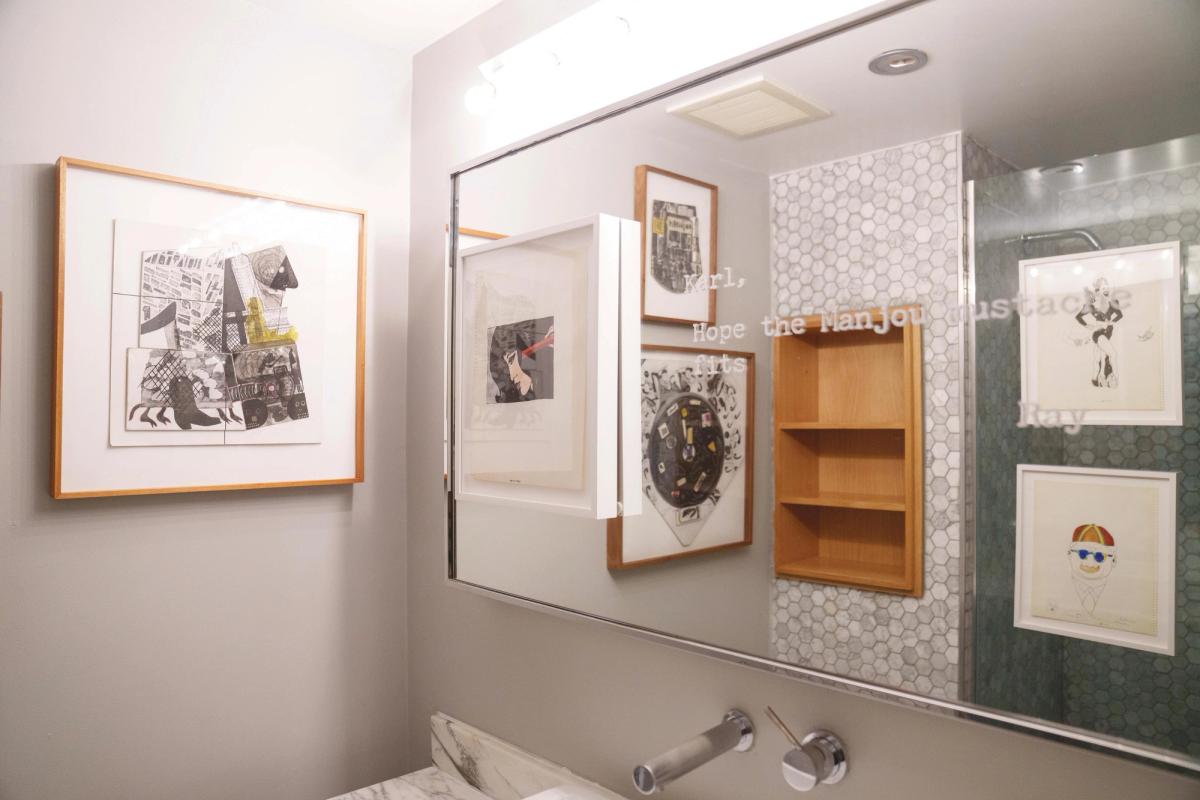The air at The Hollywood Roosevelt hotel was infectiously upbeat during the Wednesday opening of Felix, the art fair created by the Los Angeles collector Dean Valentine and gallerists Al and Mills Morán. The gallerist Jim Dempsey described the crowd as a “tsunami” that, after snaking through the various hotel rooms that serve as exhibitor stands, ultimately gathered in the sunshine and the pumping music around the David Hockney-painted pool.
“Our expectations are to have fun,” says Dempsey, a returning exhibitor and co-founder of Chicago’s Corbett vs. Dempsey. “This is not a market-driven fair, where you’re worried that things have to go well.” Felix’s stand fees, of $10,000 to $20,000, are modest compared to Frieze’s. Dempsey’s poolside cabana features a presentation of “under-the-radar Chicago artists”, accessibly priced so that “somebody could look at it and say, ‘I don’t know who this is, but I love this piece,’” he says; in the opening hours, small-scale paintings by the Chicago Imagist Philip Hanson sold for $12,000.
Despite the celebratory mood, the ongoing market retraction of the past year was still palpable. “It’s slower,” says Ellie Rines of the New York gallery 56 Henry, who has shown in the same hotel room during four different editions of the fair. Rines says that in contrast to more profitable years, her goal for this edition is to break even. Sarah Lee Hantman of the Los Angeles gallery Sea View notes “a significant amount of holds versus confirmations” leading into the fair as a notable change in buying habits. “There’s been a huge increase in people wanting to see the work in person,” she says, perhaps as a corrective to recent years of “buying from JPEGs and making some regretful purchases”.
Many of these holds materialised into sales. On opening day, Hantman sold much of her stand, as did the Miami gallerist Nina Johnson. The New York gallerist Charles Moffett reported sales including three sculptures by the Los Angeles ceramic artist Bari Ziperstein ranging from $14,000 to $18,000 and paintings by Julia Jo from $8,500 to $16,000. New York’s Rachel Uffner reported “steady sales throughout the day”, which included paintings by Anna Jung Seo ($2,600 to $4,500), a large Bernadette Despujols painting for $38,000 and sculptures by Strauss Bourque-LaFrance for $1,200 each. Collector sightings included Jason Rubell, Benjamin Godsill, Putter Pence, Allison Berg, Yvonne Force Villareal and the SFMoMA curator Jennifer Dunlop Fletcher. Other gallerists reported that, more so than usual, art advisers were travelling solo rather than with their clients.
“Among some big collectors, there’s a sense of exhaustion and flagging ability to keep up with fairs and exhibitions,” says the Los Angeles gallerist Charlie James, although he reported strong sales from his group presentation of Chicano painters including Jay Lynn Gomez and Ozzie Juarez. James is especially enthusiastic about Felix’s decidedly informal approach. The fair offers more wiggle room between stand proposals and actual presentations than larger fairs, he says. “And in these weird, idiosyncratic spaces, it’s fun to break the code to install it.”
Another fun and accessible highlight is the fair’s inaugural partnership with the fashion retailer Dover Street Market, which exhibits artist collaborations—including Air Hammons (sneakers by David Hammons, the label Denim Tears and Converse) and puzzles featuring the photography of Eli Russell Linnetz distorted by the sculptor Robert Lazzarini—in shop-like displays by the artist Oscar Tuazon. “Accessibility is definitely a key driver for this partnership,” says fair co-founder Al Morán. “This partnership creates new opportunities to explore the conversation between art and fashion in a way that has never been done before in an art-fair setting.”


